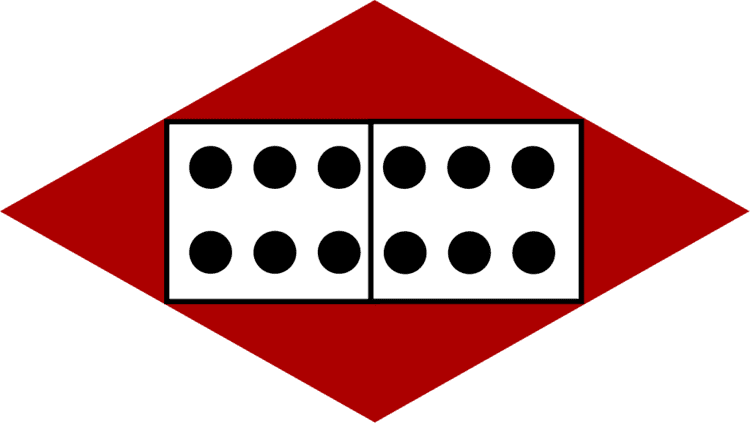Country United Kingdom Type Anti-Aircraft Brigade | Branch Territorial Army Role Air Defence | |
Active 1 October 1938–25 April 1955 Part of 3rd AA Division12th AA Division6th AA Group8th AA Group3rd AA Group | ||

42nd Anti-Aircraft Brigade was an air defence formation of Britain's Territorial Army (TA). It was responsible for protecting the City of Glasgow and industry along the Firth of Clyde during World War II.
Contents
Origin
With the expansion of Britain's Anti-Aircraft (AA) defences during the late 1930s, new formations were created to command the growing number of Royal Artillery (RA) and Royal Engineers (RE) AA gun and searchlight units. 42nd AA Brigade was raised on 1 October 1938 at Glasgow, and formed part of 3rd AA Division, which had been created a month earlier for the air defence of Scotland and Northern Ireland.
Mobilisation
At the time the brigade was formed, the TA's AA units were in a state of mobilisation because of the Munich crisis, although they were soon stood down. In February 1939 Britain's AA defences came under the control of a new Anti-Aircraft Command. In June a partial mobilisation of TA units was begun in a process known as 'couverture', whereby each unit did a month's tour of duty in rotation to man selected AA and searchlight positions. AA Command mobilised fully on 24 August, ahead of the official declaration of war on 3 September.
Order of Battle
On mobilisation in August 1939, 42nd AA Bde had the following composition:
The AA regiments of the RA were redesignated Heavy AA (HAA) in 1940 to distinguish them from the new Light AA (LAA) regiments being formed.
Phoney War
Attacks on Royal Navy bases early in the so-called Phoney War period prompted calls for stronger AA defences at Scapa Flow, Invergordon, Rosyth and the Clyde anchorage, and 3rd AA Division was given priority for delivery of HAA guns. The defenders had problems at Scapa, where a chain of rugged islands enclose an extensive area of water, which stretched beyond the reach of HAA fire from the islands. Installing gun positions on the islands required an immense amount of labour. A new Luftwaffe attack on 16 March 1940 caught the defences half-prepared: only 52 out of 64 HAA guns were fit for action, and 30 out of 108 searchlights. About 15 Junkers Ju 88s approached at low level in the dusk: half dived on the warships and the rest attacked the airfield. 44 HAA guns of 42 AA Bde engaged, but their predictors were defeated by erratic courses and low height. 17 LAA guns also engaged, but the Gun layers were blinded by gun-flashes in the half light. No enemy aircraft were brought down. A subsequent inquiry concluded that the low level attack had evaded radar, the gun lay-out still left gaps in the perimeter, and guns were out of action awaiting spare parts.
The Blitz
Following the Luftwaffe's defeat in the Battle of Britain, it began night attacks on Britain's cities ('The Blitz'). 3rd AA Division's responsibilities were split in November 1940 and a new 12th AA Division created, to which 42nd AA Bde was transferred, with its responsibility restricted to the defence of Glasgow and the Firth of Clyde. By this stage of the war, 42nd AA Bde's order of battle was as follows:
(By this time, 74th HAA Rgt was on its way to Egypt.)
The industrial town of Clydebank near Glasgow was badly hit on the night of 13/14 March 1941 in the 'Clydebank Blitz', but none of the raiders was brought down by AA fire.
Later war
As the war progressed, several of the existing TA AA units went overseas, to be replaced by war-formed units, many of them 'mixed', including women of the Auxiliary Territorial Service. 60 LAA Rgt left the UK and joined 13 AA Bde in India in April 1942. By June 42, 83 HAA and 18 LAA Rgts had joined Tenth Army in Iraq. 100 HAA Rgt was in Middle East Forces by May 1943, later serving under Eighth Army in the Italian campaign.
The AA divisions in the UK were disbanded in September 1942 and replaced by a system of AA Groups corresponding to the Groups of RAF Fighter Command. 42nd AA Bde came under 6 AA Group based at Edinburgh and affiliated to No. 14 Group RAF. When 6 AA Group HQ moved to the south of England in March 1944 to prepare for the expected assault with V-1 flying bombs, a new 8 AA Group took over command of AA brigades in Scotland. By October 1944, with the Luftwaffe suffering from such shortages of pilots, aircraft and fuel that serious aerial attacks on the United Kingdom could be discounted, and with many AA units with 21st Army Group fighting in North West Europe, the AA defences of the Clyde were reduced to a mere three HAA batteries (24 guns).
Postwar
When the TA was reconstituted in 1947, 42 AA Bde was reorganised as 68 AA Brigade (TA), with its HQ at Glasgow, forming part of 3 AA Group at Edinburgh. It comprised the following units:
On 1 October 1948, the brigade became a Regular Army HQ and dropped the '(TA)' part of its title, though continuing to command its TA units. In 1950, 500 and 558 HAA Regiments merged, as 558 HAA Rgt at Coatdyke, and 518 LAA Rgt merged with 591st (Cameronians) (Mixed) LAA/Searchlight Rgt (formerly 125 LAA Rgt, originally 5/8th Bn, The Cameronians (Scottish Rifles)).
AA Command was abolished on 10 March 1955, when 558 HAA was disbanded and the other regiments of 68 AA Bde underwent mergers. A few weeks later, HQ 68 AA Bde itself was converted into an Army Group Royal Artillery (AGRA), taking the designation 1 AGRA (Field). It joined British Army of the Rhine as a Corps artillery HQ in 1958 and was redesignated again as 1st Artillery Brigade in 1961.
